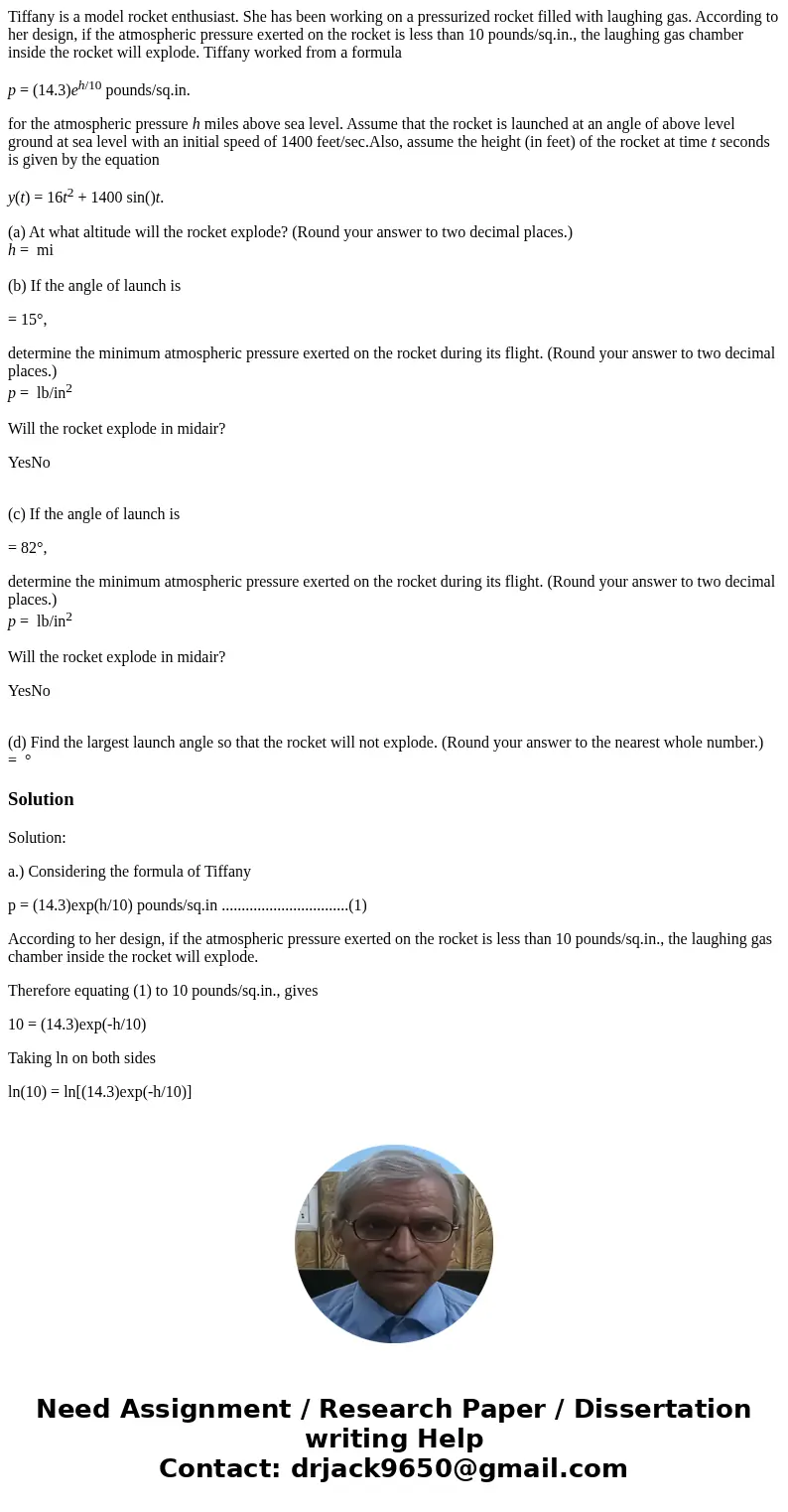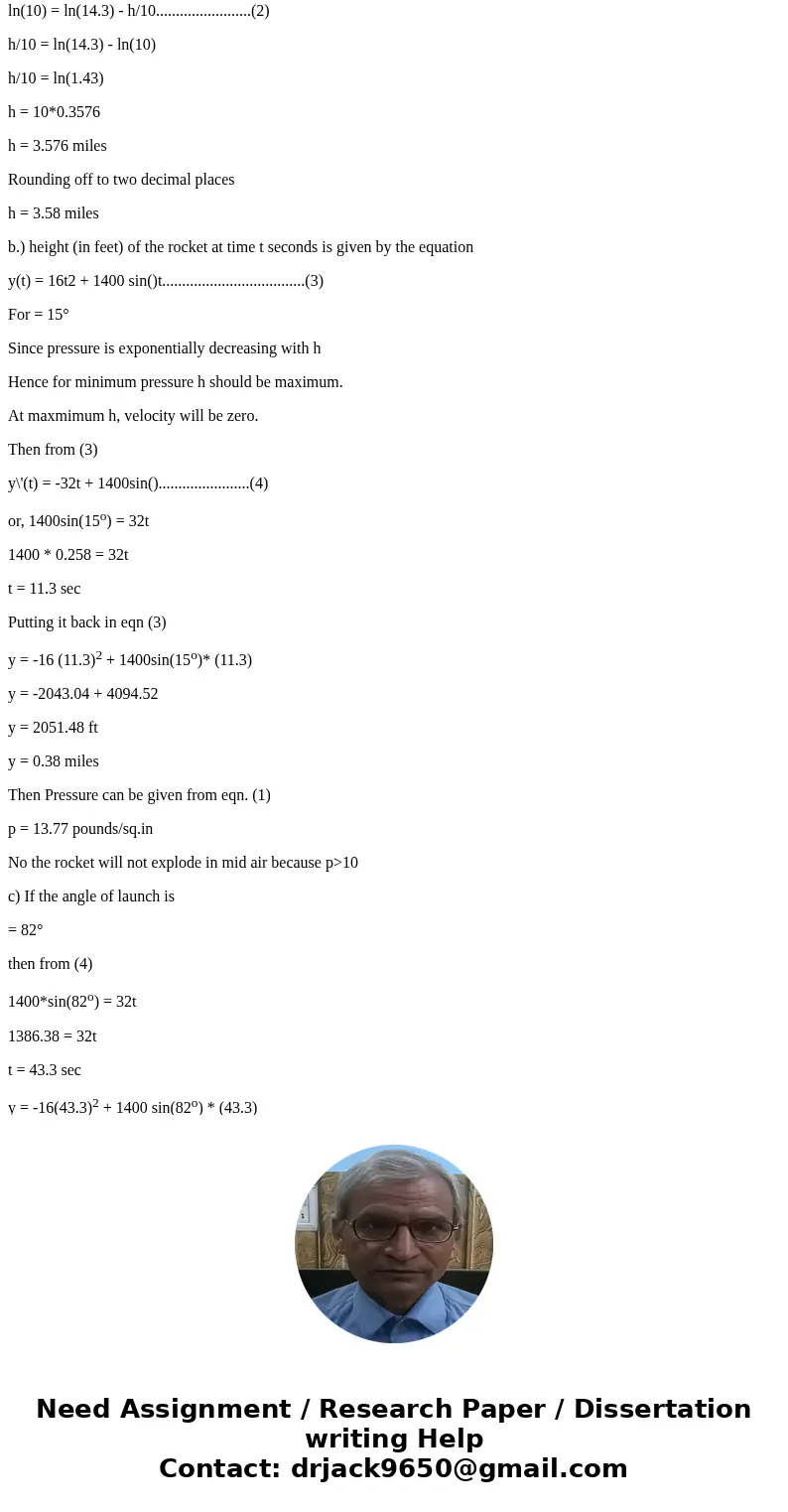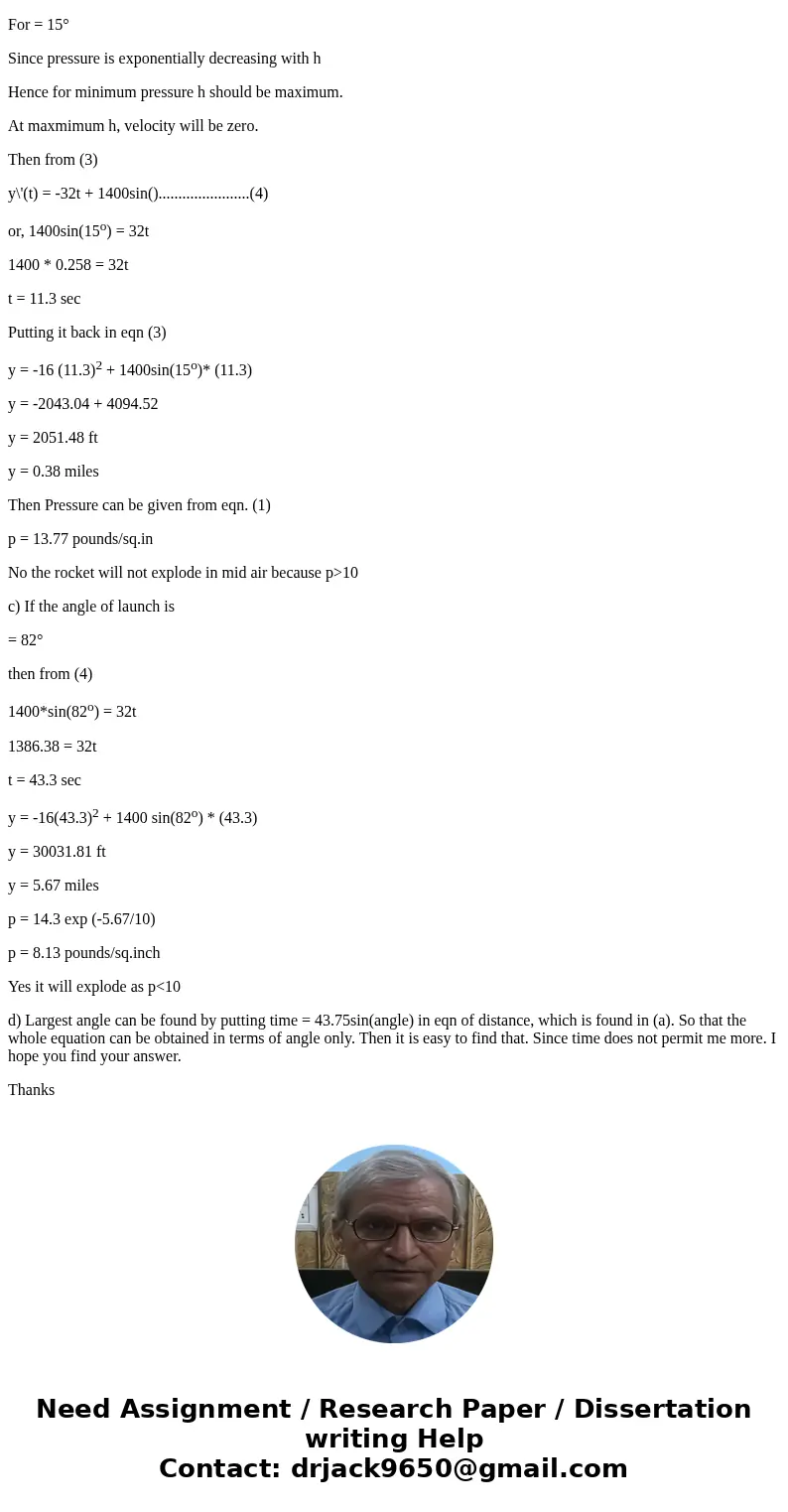Tiffany is a model rocket enthusiast She has been working on
Tiffany is a model rocket enthusiast. She has been working on a pressurized rocket filled with laughing gas. According to her design, if the atmospheric pressure exerted on the rocket is less than 10 pounds/sq.in., the laughing gas chamber inside the rocket will explode. Tiffany worked from a formula
p = (14.3)eh/10 pounds/sq.in.
for the atmospheric pressure h miles above sea level. Assume that the rocket is launched at an angle of above level ground at sea level with an initial speed of 1400 feet/sec.Also, assume the height (in feet) of the rocket at time t seconds is given by the equation
y(t) = 16t2 + 1400 sin()t.
(a) At what altitude will the rocket explode? (Round your answer to two decimal places.)
h = mi
(b) If the angle of launch is
= 15°,
determine the minimum atmospheric pressure exerted on the rocket during its flight. (Round your answer to two decimal places.)
p = lb/in2
Will the rocket explode in midair?
YesNo
(c) If the angle of launch is
= 82°,
determine the minimum atmospheric pressure exerted on the rocket during its flight. (Round your answer to two decimal places.)
p = lb/in2
Will the rocket explode in midair?
YesNo
(d) Find the largest launch angle so that the rocket will not explode. (Round your answer to the nearest whole number.)
= °
Solution
Solution:
a.) Considering the formula of Tiffany
p = (14.3)exp(h/10) pounds/sq.in ................................(1)
According to her design, if the atmospheric pressure exerted on the rocket is less than 10 pounds/sq.in., the laughing gas chamber inside the rocket will explode.
Therefore equating (1) to 10 pounds/sq.in., gives
10 = (14.3)exp(-h/10)
Taking ln on both sides
ln(10) = ln[(14.3)exp(-h/10)]
ln(10) = ln(14.3) - h/10........................(2)
h/10 = ln(14.3) - ln(10)
h/10 = ln(1.43)
h = 10*0.3576
h = 3.576 miles
Rounding off to two decimal places
h = 3.58 miles
b.) height (in feet) of the rocket at time t seconds is given by the equation
y(t) = 16t2 + 1400 sin()t....................................(3)
For = 15°
Since pressure is exponentially decreasing with h
Hence for minimum pressure h should be maximum.
At maxmimum h, velocity will be zero.
Then from (3)
y\'(t) = -32t + 1400sin().......................(4)
or, 1400sin(15o) = 32t
1400 * 0.258 = 32t
t = 11.3 sec
Putting it back in eqn (3)
y = -16 (11.3)2 + 1400sin(15o)* (11.3)
y = -2043.04 + 4094.52
y = 2051.48 ft
y = 0.38 miles
Then Pressure can be given from eqn. (1)
p = 13.77 pounds/sq.in
No the rocket will not explode in mid air because p>10
c) If the angle of launch is
= 82°
then from (4)
1400*sin(82o) = 32t
1386.38 = 32t
t = 43.3 sec
y = -16(43.3)2 + 1400 sin(82o) * (43.3)
y = 30031.81 ft
y = 5.67 miles
p = 14.3 exp (-5.67/10)
p = 8.13 pounds/sq.inch
Yes it will explode as p<10
d) Largest angle can be found by putting time = 43.75sin(angle) in eqn of distance, which is found in (a). So that the whole equation can be obtained in terms of angle only. Then it is easy to find that. Since time does not permit me more. I hope you find your answer.
Thanks



 Homework Sourse
Homework Sourse